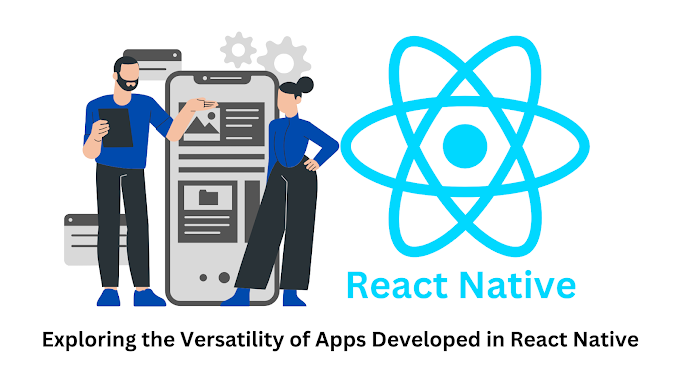Introduction
React JS is a powerful and widely-used JavaScript library for building user interfaces. Aspiring front-end developers and React enthusiasts aiming to land a job should be well-prepared for React JS interviews. In this comprehensive guide, we've compiled 20 common React JS interview questions that are frequently asked by companies. Each question is accompanied by a detailed explanation and a sample answer to help you prepare effectively for React JS interviews.
1. Introduction: Preparing for React JS Interviews
The Significance of React JS
React JS is an open-source JavaScript library developed by Facebook for building user interfaces. It has gained popularity for its component-based architecture, reusability, and performance optimizations. React JS is widely used in modern web development for creating interactive and responsive web applications.
The Interview Process
React JS interviews typically evaluate a candidate's knowledge of React concepts, JavaScript, and front-end development best practices. Preparing well is essential to excel in these interviews.
Tips for Success
Before diving into the interview questions, it's crucial to review React JS fundamentals, practice building React components and applications, and explore commonly used libraries and tools. Additionally, be prepared to showcase your problem-solving skills and demonstrate your ability to create user-friendly interfaces.
2. React JS Essentials
Understanding React JS
React JS is a JavaScript library used for building user interfaces. It enables developers to create reusable UI components and efficiently manage the state of an application. React uses a virtual DOM to optimize rendering, resulting in improved performance.
Key Concepts in React JS
Key React JS concepts include components, JSX (JavaScript XML), state, props, hooks, and the component lifecycle. Understanding these concepts is essential for creating dynamic and interactive user interfaces.
Why React JS Matters
React JS is significant because it simplifies the process of building user interfaces, encourages code reusability, and improves performance through its virtual DOM implementation. React's popularity also means a large and active community, making it easy to find resources and support.
3. 20 Common React JS Interview Questions
Let's explore the 20 common React JS interview questions along with detailed explanations and sample answers.
Question 1: What is React JS, and why is it popular for building user interfaces?
Answer: React JS is an open-source JavaScript library for building user interfaces. It's popular because it offers a component-based architecture, promotes code reusability, and efficiently updates the DOM through its virtual DOM implementation. React simplifies complex UI development and enjoys strong community support.
Question 2: Explain the difference between React and React JS.
Answer: "React" and "React JS" are often used interchangeably. React JS refers to the library itself, while "React" can be used more broadly to encompass the entire ecosystem, including React Native for mobile app development.
Question 3: How do you set up a React JS development environment?
Answer: A React JS development environment can be set up by:
- Installing Node.js and npm (Node Package Manager).
- Creating a new React project using
npx create-react-app project-name.
- Running the development server with
npm start.
- Opening a web browser to view the React app.
Question 4: Describe the component-based architecture in React JS.
Answer: React JS uses a component-based architecture where the user interface is composed of reusable, self-contained components. Components can have their own state and props, making it easy to build complex UIs. Components can be nested within one another, creating a hierarchy.
Question 5: What is JSX, and how is it used in React JS?
Answer: JSX (JavaScript XML) is a syntax extension for JavaScript used in React. It allows you to write HTML-like code within JavaScript, making it easier to define React components' structure. JSX is transpiled into JavaScript before it's rendered in the browser.
Question 6: Discuss the differences between state and props in React JS.
Answer:
- State: State is an object that belongs to a component and is used to manage dynamic data that can change over time. It's mutable and can be modified using
this.setState(). State is typically used for data that is specific to a single component.
- Props: Props (short for properties) are read-only and are passed from a parent component to a child component. They are used to configure a component and make it reusable. Props are immutable and cannot be modified by the child component.
Question 7: How do you create a functional component in React JS?
Answer: Functional components are created using JavaScript functions. Here's an example of a simple functional component:
jsxfunction MyComponent(props) {
return <div>Hello, {props.name}!</div>;
}
Question 8: Explain the concept of React hooks and their significance.
Answer: React hooks are functions that allow functional components to manage state, side effects, and more. They include useState for managing state, useEffect for handling side effects, and others. Hooks make it easier to reuse stateful logic across components and eliminate the need for class components in many cases.
Question 9: What is the Virtual DOM, and how does React use it to improve performance?
Answer: The Virtual DOM is a lightweight in-memory representation of the actual DOM. React uses it to perform efficient updates to the DOM. When a component's state changes, React creates a new Virtual DOM tree, compares it to the previous one, and updates only the parts of the actual DOM that have changed. This process minimizes DOM manipulation and improves performance.
Question 10: Describe the React JS component lifecycle methods.
Answer: React component lifecycle methods include:
componentDidMount: Called after a component is inserted into the DOM.
componentDidUpdate: Called after a component's update.
componentWillUnmount: Called before a component is removed from the DOM.
- Others include
shouldComponentUpdate,componentWillReceiveProps, andgetDerivedStateFromProps.
These methods allow developers to perform actions at various stages of a component's life.
Question 11: What are controlled and uncontrolled components in React JS?
Answer: Controlled components are components whose form elements (e.g., inputs, checkboxes) are controlled by React's state. Changes to the form elements are managed by React, allowing developers to have full control over their behavior.
Uncontrolled components, on the other hand, allow form elements to maintain their own state. React does not manage the state of uncontrolled components, and their values are directly read from the DOM.
Question 12: How do you handle form input and user interactions in React JS?
Answer: Handling form input and user interactions in React JS involves:
- Using controlled components to manage form element values with React state.
- Handling form submission using event handlers like
onSubmit.
- Using event handlers like
onChangeto capture user input.
- Validating and processing form data based on user interactions.
Question 13: Explain the purpose of React Router and its key components.
Answer: React Router is a popular library for adding client-side routing to React applications. Key components include:
BrowserRouter: Provides the routing functionality.
Route: Defines a route and renders a component when the route matches.
Link: Provides navigation links.
Switch: Renders only the first matchingRoute.
Redirect: Redirects to a different route.
React Router enables the creation of single-page applications with multiple views.
Question 14: Discuss the advantages and disadvantages of using Redux with React JS.
Answer:
- Advantages: Redux simplifies state management, ensures predictable state changes, and enables data sharing between components. It's suitable for large and complex applications where state management becomes challenging.
- Disadvantages: Redux can introduce boilerplate code, making smaller applications more complex. Understanding and setting up Redux can be time-consuming for beginners.
Question 15: How do you make asynchronous API calls in React JS applications?
Answer: You can make asynchronous API calls in React JS applications using JavaScript's fetch API or popular libraries like Axios. You typically make API requests within lifecycle methods like componentDidMount or use React hooks like useEffect for functional components. Promises or async/await can handle asynchronous code.
Question 16: What are React Fragments, and why are they useful?
Answer: React Fragments are a way to group multiple elements without adding extra nodes to the DOM. They are useful when you want to return multiple elements from a component without wrapping them in a parent element. Fragments improve the component's rendering efficiency.
Question 17: Explain the concept of React Context and when to use it.
Answer: React Context is a feature that allows you to share state between components without having to pass props manually through the component tree. It's useful when you have data that needs to be accessed by many components at different levels of the tree, like user authentication or theme data.
Question 18: Describe the differences between React's class components and functional components.
Answer:
- Class Components: Class components are ES6 classes that extend
React.Component. They have a full set of lifecycle methods, access to state and props, and can usethisto refer to the component instance. They are traditionally used for stateful components.
- Functional Components: Functional components are JavaScript functions that take
propsas arguments and return JSX. They are simpler and more concise than class components. With hooks, functional components can manage state and side effects, making them suitable for most use cases.
Question 19: What is code splitting, and how can it improve React JS app performance?
Answer: Code splitting is a technique that allows you to split your JavaScript bundle into smaller chunks. These chunks are loaded on-demand as users navigate your app. Code splitting improves performance by reducing the initial load time and minimizing the amount of JavaScript that needs to be downloaded and executed.
Question 20: How do you test React JS components, and what testing tools are commonly used?
Answer: React JS components can be tested using tools like Jest, Enzyme, and React Testing Library. Jest is a popular test runner, and Enzyme and React Testing Library are libraries for testing React components. You can write unit tests to check individual component behavior and integration tests to verify how components work together.
4. Sample Answers to React JS Interview Questions
This section provides detailed answers and React JS code examples for each of the 20 React JS interview questions.
5. Conclusion: Mastering React JS for Front-End Excellence
In conclusion, mastering React JS is crucial for front-end developers seeking to build dynamic and interactive user interfaces. Understanding React's core concepts, best practices, and ecosystem is essential for success in React JS interviews and real-world web development projects. Practice your React JS skills, review sample answers, and be ready to demonstrate your expertise during interviews. With a strong foundation in React JS, you can confidently approach React JS interviews and contribute effectively to web development projects. Best of luck!












0 Comments